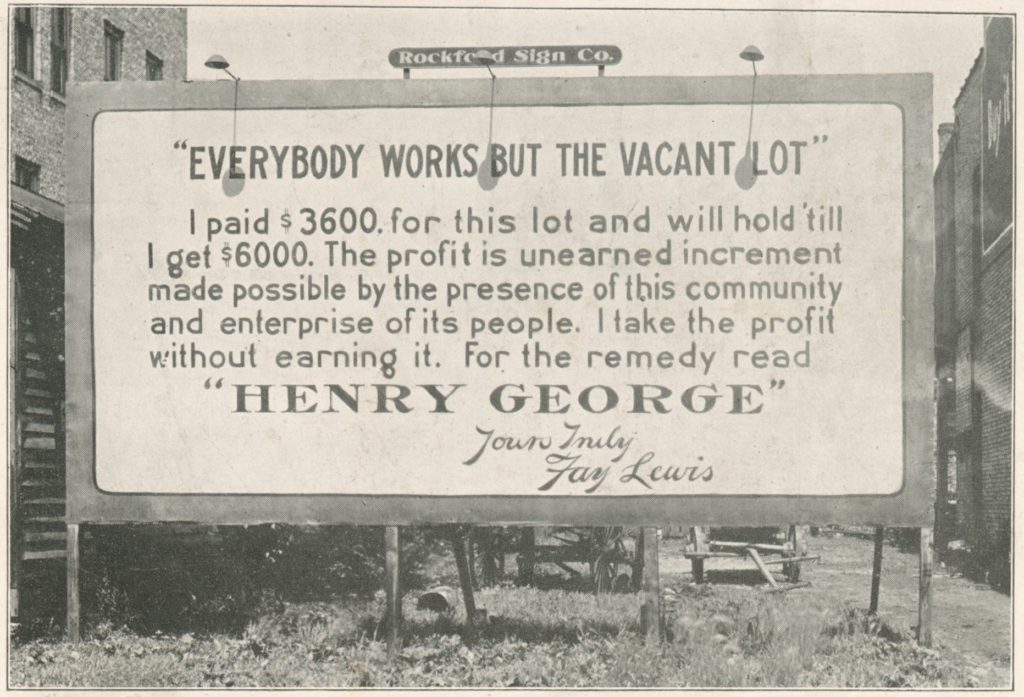Data Dig: Tracking the Money in the Long Beach Mayoral Race
9 minute readNext Tuesday, Long Beach residents will go to the polls to vote for all citywide elected positions and councilmembers for the odd-numbered districts: the Third, Fifth, and Seventh. (Lena Gonzalez ran unopposed and won by default in the First District, as did Rex Richardson in the Ninth.)
However, little reporting has been done on what special interests are represented by the hundreds of thousands of dollars that have poured into the City Council and mayoral races.
In the interest of transparency, we analyzed thousands of campaign contribution entries in disclosure forms filed by the candidates involved in the four big-ticket races to determine what sector of the economy the donations came from.
The first in our series of election finance reports looks at the mayoral race, which will see incumbent Robert Garcia running against Henk Conn, a former social worker and now substitute teacher. Conn has been a vocal advocate of a rent control initiative that is currently in the signature-collecting phase for the November ballot. Garcia opposes the proposed ordinance.
While this race has attracted the most overall contributions, Garcia is widely considered to be a shoe-in candidate, and the extremely lopsided distribution of the donations reflects the donor class’ interest in keeping the status quo, or at least having a hand in its continued success.
Our analysis covers contributions made between Jan. 1, 2017 and March 24. During that period, Garcia raised $458,553; Conn raised $609.
Included in the figures are monetary and in-kind donations to campaigns and officeholder accounts (for incumbents), as well as independent expenditures by Political Action Groups in support of a candidate.
We found that a fourth of the contributions to Garcia’s coffers, $117,461, came from companies or individuals employed in the development, real estate, and construction sector.
In recent years, the city has experienced an uptick in development, with billions of dollars in construction activity underway throughout the city. This has led to a boon for some, but has also caused rising rents and the displacement of low-income residents, especially in the downtown area.
The two next largest donors were the general business and manufacturing sector with $60,555 (13 percent) in contributions, followed by $40,831 (9 percent) from retirees, students, artists, homeowners, and the unemployed. The bulk of the donations in this category, labeled “Other” in the above chart, came from those who identified as retired.
Conn’s three donations of over $100 came from a social worker, a teacher, and a former Santa Monica City Council member.
Tomisin Oluwole
Coquette
Acrylic on canvas
18 x 24 inches
Click here to check out our interview with Tomisin Oluwole, a a literary and visual artist based in Long Beach.

Instead of gunking up our site with ads, we use this space to display and promote the work of local artists.
We were unable to pinpoint the exact industry for a small amount of Garcia’s contributors due to the often obscure nature of limited liability companies, which don’t require public disclosure of its members and activities. These contributors are listed as “undetermined” in our chart.
We included officeholder account funds in our figures because although funds from those accounts cannot lawfully be used for direct political campaign expenditures, a recent rule change approved by the City Council allows that money to be used for donations to other political campaigns.
Officeholder account funds are ostensibly for expenses incurred by the officeholder during their tenure; for things such as meals, airfare, and holding community events. However, critics of the accounts have described them as slush funds for political contributions outside the designated election period.
We also found that some of Garcia’s top donors who donated the maximum to his campaign also dished out money to his officeholder account during the election period, adding to the perception that these accounts can be a way for donors to show a candidate extra largesse without exceeding contribution limits.
For citywide offices such as the mayor, these accounts have a contribution limit of $1,000 and a balance limit of $75,000. Campaign contributions are capped at $800.
During the period we looked at, we found a significant discrepancy between contributions to Garcia’s officeholder account under $100, which totaled only $215, and contributions over $100, which totaled $35,815. This indicates his officeholder account was primarily funded by larger donations.
The Garcia for Mayor 2018 campaign and the mayor’s officeholder account had balances of $217,071 and $9,595, respectively, as of March 24, the end of the last reporting period and just over two weeks before the election.
Below are some noteworthy contributors to Garcia’s re-election campaign and officeholder account over the course of the election period:
- $4,600 – Michael and Carla Tumanjan
The Tumanjan real estate team topped the Garcia donor list. Michael, a real estate agent, also heads the Tumanjan Homes Corporation, which does development and construction work across Southern California. The company’s website displays various upscale housing projects the company has completed. Michael gave $1,000 each of the last two years to Garcia’s officeholder account identifying as a “self-employed” “general contractor,” and another $800 to Garcia’s mayoral campaign. Carla donated $1,000 to the officeholder account as “self-employed” in “real estate investment,” and then shuffled over another $800 to Garcia for Mayor 2018 under no listed employer, with an occupation of “homemaker.” - $3,950 – 6 Founders LLC; Pacific 6
In March, four founding partners of Pacific 6—“a community investment and development partnership capitalized at $100 million,” according to their website—each gave $800 to Garcia’s mayoral campaign listing their employer as “6 Founders LLC.” Pacific 6 spokesperson David Sommers also contributed $750. Last November, Pacific 6 acquired the Breakers Hotel building, at 210 East Ocean Blvd, and plans to renovate it into a luxury hotel. One of the founders of Pacific 6 is former Molina Healthcare Chief Financial Officer, John Molina. Prior to being ousted as CFO of the healthcare company last May, Molina donated $800 to the Garcia campaign. (This amount was not included in the above $3,950 total, as he did not donate under the 6 Founders LLC or Pacific 6 monikers.) - $3,400 – The Waterford Group, Inc.; Waterford Residential LLC; Stillwater Investment Group
The trio of real estate investment firms based out of the same offices in Irvine have collectively donated $3,400 to Garcia over the past year. Waterford Residential LLC contributed $1,000 to the Officeholder Account and $800 to Garcia for Mayor. The Waterford Group, Inc. also sent $800 to the mayoral campaign; as did Stillwater Investment Group, a managing partner of Waterford Residential, LLC. The companies have been buying up multi-family buildings in Long Beach, purchasing eight in the past few years totaling more than 150 units. - $2,400 – Vopak
The Dutch-based company operates a terminal at the Port of Long Beach that pumps liquid chemicals to and from barges, railcars, and tanker trucks. In 2013, the Harbor Commission gave Vopak the green light to study the feasibility of constructing a “deep-water crude oil and petroleum products terminal” at Pier T. It is not clear if the company is still pursuing the project. - $1,800 – Committee to Expand The Middle Class, Supported By Airbnb, Inc.
The short-term rental giant sent $1,800 total to Garcia’s officeholder account and mayoral campaign. This comes in the middle of a busy few years in which Airbnb — via their “Committee to Expand the Middle Class” — has spent almost a quarter of a million in San Francisco politics, and $100k to support a campaign for homeless housing in Los Angeles. The name for Airbnb’s committee appears to derive from a study the company itself put together, claiming that a majority of Americans believe “Airbnb helps middle class families afford their homes.” Long Beach city staff was asked last year to compile a report on how to regulate short-term rentals in the city. - $1,800 – Laborers’ International Union Of North America Local 1309 PAC
One of Garcia’s top donors, this PAC is tied to a union representing over 2,000 construction workers. Their offices are located in Lakewood. - $1,800 – Compulink Management Center, Inc.
The Long Beach-based company provides business management software and has in the past been contracted by the city to provide software solutions. - $1,000 – JR van Dijs Inc.
The construction company’s Project Manager Richard Lewis Jr. donated $500 to the mayor’s re-election campaign. Lewis is also the vice chair of the Planning Commission—appointed by Garcia in 2016. In addition, he is a principal at Urbana Development LLC, which is one of the firms involved in the $200 million Broadway Block project at Broadway and Long Beach Boulevard. Last month, the 392-unit mixed-use mega-project was approved by the Planning Commission, with Lewis recusing himself from the vote. However, his financial stake in the downtown area raises questions about whether he may have a conflict of interest in future items that come before the Commission. His partner at Urbana, Jan Robert Van Dijs, is also the president of JR van Dijs Inc. and contributed $500 to Garcia. - $600 – James Bunnell
The COO of Total Network Solutions gave the mayor’s re-election campaign $600 in September 2017 and a month later the city council approved a $200,000 annual increase in the company’s contract with the city to provide “as-needed miscellaneous personal computer software.”
While nearly all of the big money went Garcia’s way in this race, the Association of Long Beach Employees PAC spent about $36,000 in advertisement opposing Garcia, including flyers, emails, and the production of a video, according to disclosure forms filed by the committee.
Also of note: a large donor to Garcia and other candidates in the past, BNSF Railroad, did not donate to the mayor this time around. In January, a California appellate court judge ruled against the rail giant, preventing a proposed rail yard near the ports from moving forward. The lawsuit was brought in part by the city of Long Beach and several environmental and legal groups, which contended the project would have a negative health impact on Westside residents.
Our next installment in this series later this week will look into the financing of the Third, Fifth, and Seventh District city council campaigns.
If you want to continue seeing this type of reporting from FORTHE, please consider donating by clicking the button at the top of the page.


 kevin@forthe.org
kevin@forthe.org @reporterkflores
@reporterkflores




